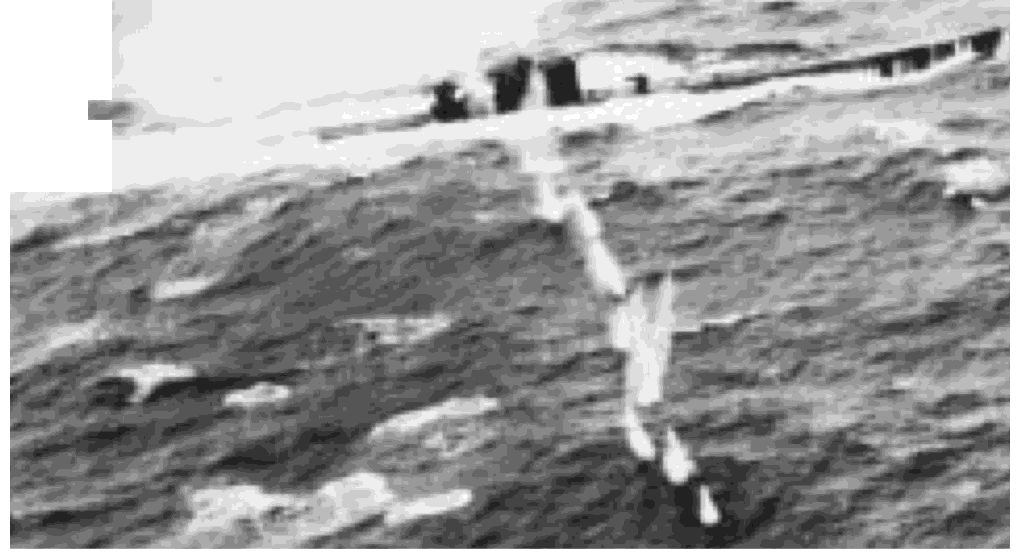


PART
5
World War II
1940-1945
Thirty years after the Navy had acquired its first air-
plane, and only 19 years after it had acquired its first
aircraft carrier, Naval Aviation faced the supreme test
of war. When it was called upon to carry the fight to
the enemy, it not only carried out its tasks, but forged
ahead to become the very backbone of fleet striking
power.
If it had not already been shown in combat before
the United States entered the war, all doubts as to the
potency of naval air power were removed by the infa-
mous, yet skillfully executed attack on Pearl Harbor,
when Japanese carrier aircraft in one swift stroke elim-
inated a major portion of the Navy's heavy surface
power. That our own forces had the kernel of a simi-
lar potential was demonstrated on a much smaller
scale as carrier forces struck the first retaliatory blows.
The geographic position of the United States put it
squarely between two wars that had little in common.
Air operations on the Atlantic side, except for partici-
pation in three amphibious operations, were essential-
ly a blockade and a campaign to protect ships deliver-
ing raw materials to our factories and war munitions
and reinforcements to our Allies. In the Pacific, it was
a matter of stopping an enemy advance which, in a
few short months, had spread over all the western and
parts of the south and central Pacific, and then carry-
ing out the bitterly contested task of driving him
homeward across the broad expanse of an island-dot-
ted sea.
The country was hardly ready for either campaign.
The Navy and Marine Corps air arms could muster
only 7 large and 1 small aircraft carriers, 5 patrol
wings and 2 Marine aircraft wings, 5,900 pilots and
21,678 enlisted men, 5,233 aircraft of all types includ-
ing trainers, and a few advanced air bases. But aided
by its distance from the enemy and fortunate in its
industrial power, the United States built the ships,
planes and equipment. Its military forces trained the
land, sea and air forces that ultimately beat down the
enemy, drove them from strategically located bases,
cut off their raw materials, and placed the allied forces
in position to launch final air and amphibious offen-
sives. These offensives were made unnecessary as the
awesome destructive power of the atom was released
upon Hiroshima and Nagasaki.
For the first time in history, naval engagements were
fought entirely in the air without opposing surface
forces sighting each other. New words and phrases
entered the aviator's lexicon; words like air support,
hunter-killer, JATO, CIC, CAP, bogie, scramble and
splash. Radar pierced the night and gave new eyes to
the fleet; advances in technology, particularly in elec-
tronics, improved the defense and added power to the
offense. The scientist contributed directly to the war
effort in both the development of specialized equip-
ment and in the application of scientific principles to
operational tactics. Logistics took on new importance.
Refueling and replenishment at sea were developed to
a high art and increased the mobility and staying
power of fleet forces.
In the course of the war, Navy and Marine pilots
destroyed over 15,000 enemy aircraft in the air and on
..
---
Exploding depth charge and line of splashes from machinegun bul-
lets bring the end of German submarine 44360
101
|
1 |
 |